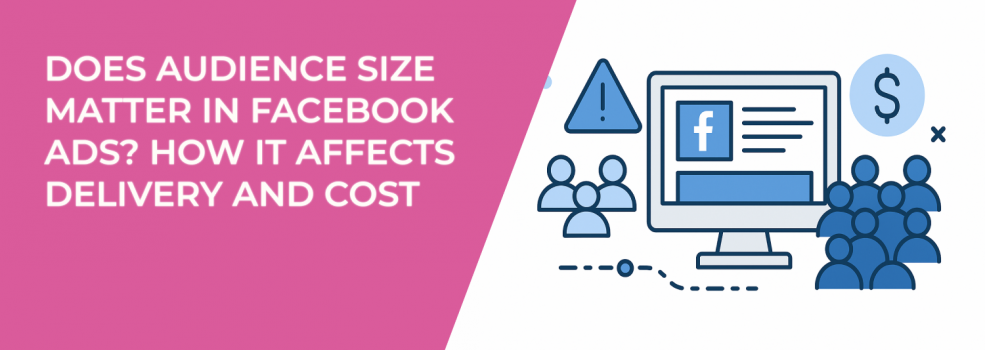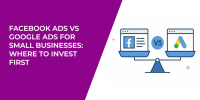When you set up Facebook ads, one big question always comes up: how big should your audience be? Some marketers like huge audiences, while others say smaller, focused groups work better. So, does audience size really matter? And how does it affect delivery and cost?
Let’s look at this in simple terms.
Why Audience Size Impacts Delivery
Facebook runs on data. The bigger your audience, the more data Facebook has to test and optimize. A broad audience gives Facebook room to figure out who engages and who doesn’t. That usually makes delivery smoother, especially if you spend more on ads.
But there’s a risk. If the audience is too big, your ad may reach people who have no interest at all. That means wasted impressions and wasted budget.
If the audience is too small, delivery can get stuck. Your ads may show to the same people too often, or Facebook might struggle to spend your budget. Sometimes you’ll even see the warning “Ad Set May Get Zero”.
So, the sweet spot is somewhere in the middle.
How Audience Size Affects Costs
Audience size doesn’t only change delivery — it also changes your costs. Here are the main ways it plays out:
-
Smaller audiences usually cost more. Since more advertisers are chasing the same people, competition drives prices up.
-
Larger audiences can lower costs. Facebook can find cheaper clicks and impressions when it has more people to choose from.
-
Too broad wastes money. If you go too wide, you’ll pay for cheap clicks that don’t convert into sales or leads.
Costs are often misunderstood. A low CPM (cost per 1,000 impressions) looks good, but if those impressions don’t convert, you’re still overspending. On the flip side, a high CPC (cost per click) isn’t always bad if the clicks are from people with strong purchase intent.
If you’re struggling with poor results, it may not be just the size of your audience — ad targeting choices and the quality of your creative often matter more.
Tips for Finding the Right Audience Size
Finding that balance takes some testing, but there are strategies that help. These tips will give you a solid starting point:
-
Start broad, then refine. Begin with a wide audience, then narrow it down once you see what works.
-
Match audience to your budget. A small daily budget won’t perform well in a giant audience. A big budget won’t work in a tiny one.
-
Avoid overlap. If two ad sets target the same people, you’ll compete against yourself and pay more.
-
Use exclusions wisely. Exclude groups that don’t fit, like past buyers when running new customer ads. That keeps your audience efficient without making it too small.
-
Try lookalike audiences. A 1% lookalike often gives a good balance of size and quality.
-
Layer detailed targeting. Instead of shrinking your audience too far, combine interests or behaviors to keep size healthy while adding relevance.
-
Watch frequency. If your audience is too small, ad frequency can spike quickly. That means people see the same ad too many times, which hurts performance.
-
Think globally, test locally. If your product or service can be sold in multiple regions, test larger international audiences alongside smaller, location-based ones.
These aren’t rigid rules, but they’ll keep your campaigns from running into common problems like wasted spend or poor delivery. For more detail on building effective target groups, see How to Define a Target Audience for Marketing.
Audience Size and the Learning Phase
Facebook ads need about 50 events (like purchases or leads) in seven days to leave the learning phase. If your audience is too small, it can be hard to get enough conversions, and your ads may stay in learning.
With bigger audiences, Facebook can usually find those conversions faster, which helps stabilize performance.
Here are a few things to keep in mind during learning:
-
Avoid too many changes. Every time you change targeting, the learning phase resets.
-
Make budgets realistic. A $5 daily budget won’t generate enough conversions in a 500,000-person audience.
-
Test one variable at a time. Creative, placement, and audience all affect optimization. Focus on one factor to keep results clear.
You can dive deeper into this topic with How to Finish the Facebook Learning Phase Quickly.
So, Does Audience Size Really Matter?
Yes. Audience size changes delivery, costs, and how fast your ads optimize. To make it clearer, here’s the trade-off:
-
Small audiences bring higher quality but higher costs.
-
Large audiences bring scale and lower costs but may waste budget if not targeted well.
Keeping this in mind helps you make smarter choices. Don’t just pick a number — think about how it matches your budget and campaign goals.
Final Thoughts
Audience size is one of the hidden levers that can make or break a campaign. Test different sizes, watch how delivery and costs shift, and learn from the results.
Does audience size matter in Facebook ads? Yes — but what matters even more is how you use it.

